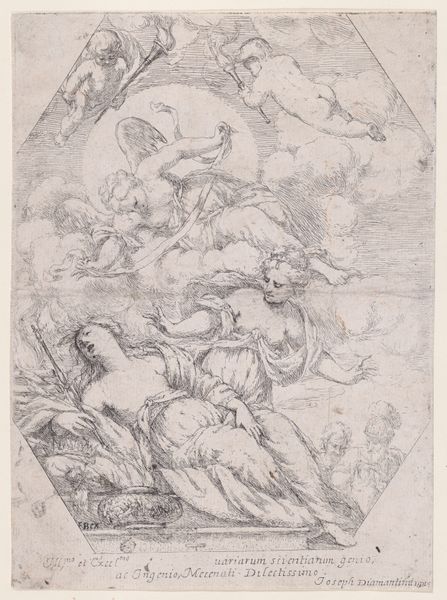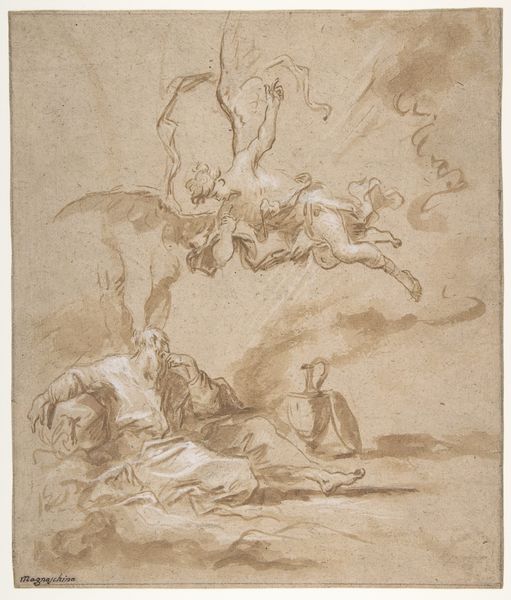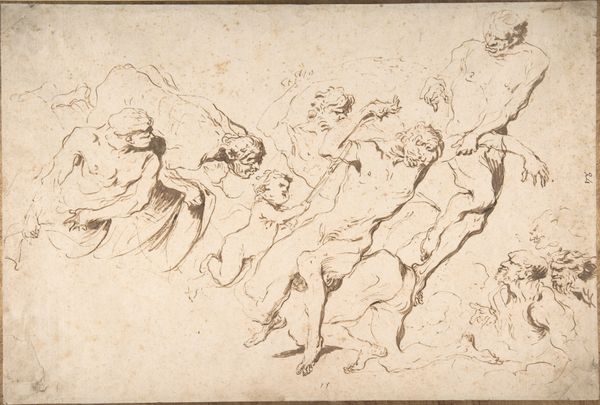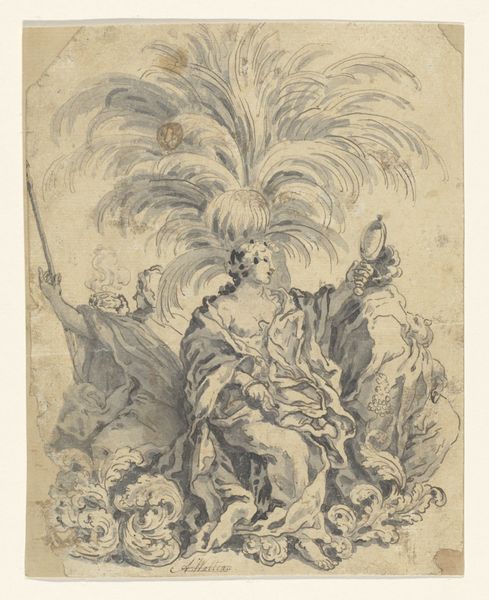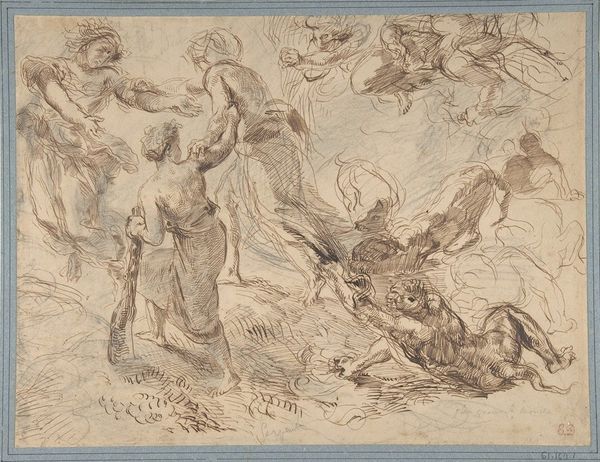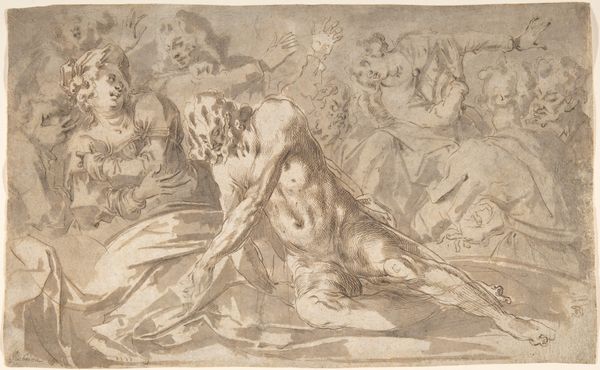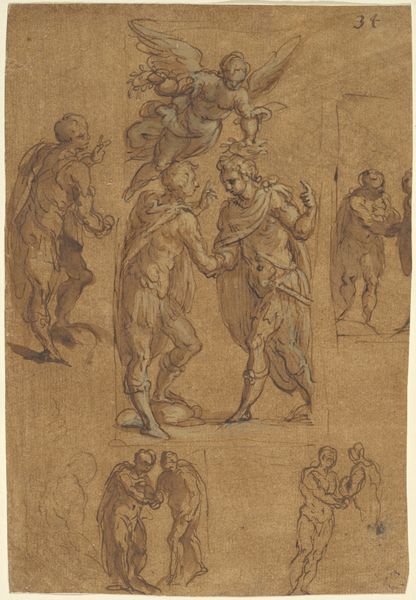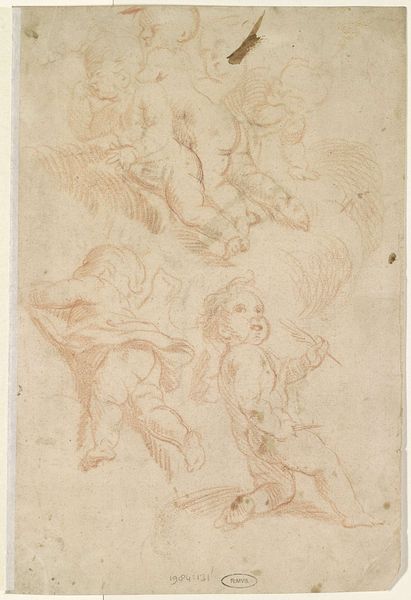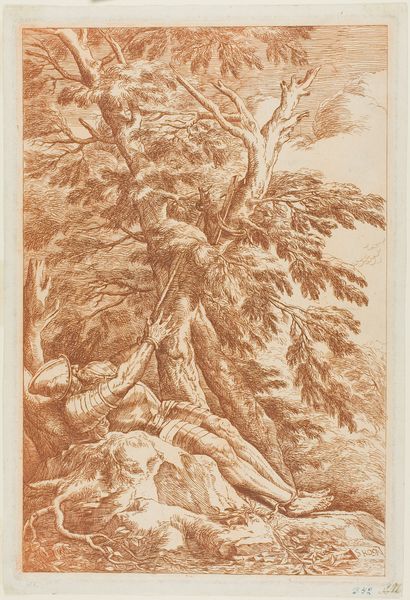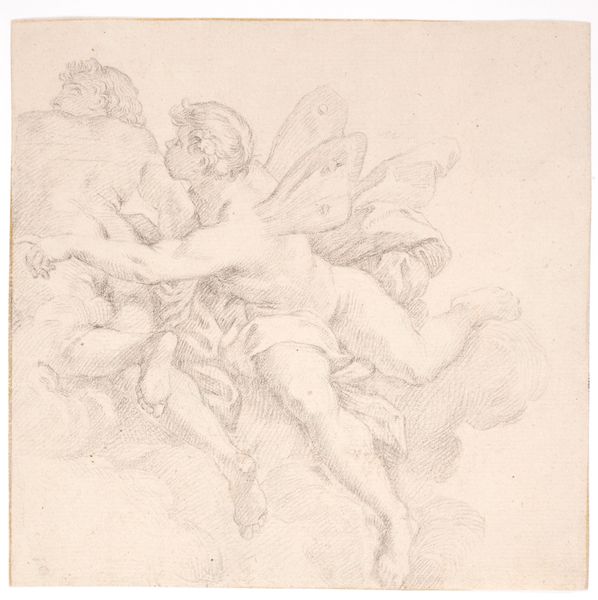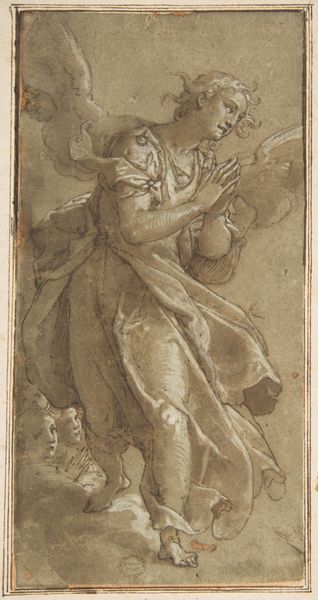
drawing, print, pencil
#
drawing
#
allegory
#
baroque
# print
#
figuration
#
pencil
Dimensions: 8-15/16 x 7-3/16 in. (22.7 x 18.2 cm)
Copyright: Public Domain
Curator: Here we have a drawing entitled “Angels and Putti,” made sometime between 1600 and 1700, but its creator remains unknown. The piece employs pencil and print techniques to bring its allegorical scene to life. Editor: The flurry of figures immediately suggests upward movement, a visual elation almost spilling off the page. I find the limited palette actually intensifies the focus on form and line. Curator: Absolutely. The Baroque style emphasizes precisely that kind of dynamism, achieved here through layered figuration. Consider how the composition directs the eye— from the supplicating figure at the bottom up towards the ascendant angel above. What symbolic interplay might you see unfolding? Editor: Perhaps it is the relationship between earthly toil and divine transcendence? The lower figure seems grounded, weighted, while the angel’s upward thrust speaks of liberation. Those chubby putti lend a further sense of airy lightness, don't you think? They're playful and free from earthly concerns, as though they only exist within the realm of allegory itself. Curator: Quite, and allegory was critical at this time as visual encoding for social, political, or religious messages—frequently used for propaganda. The way such idealized figures were rendered served to reinforce accepted standards and morals through public display and private admiration. These works reaffirmed faith, glorified patrons, and shaped cultural values. Editor: Yet stripped of explicit context, it becomes primarily about form and texture. See how the varied pressure of the pencil creates such a rich contrast, heightening our sense of depth and the almost sculpted appearance of the beings. I imagine that back then, even this drawing held cultural power far beyond the pure composition. Curator: Indeed. It underscores how artwork serves simultaneously as an aesthetic object and as a reflection of prevailing ideologies, shaping thought processes and societal hierarchies during that time period. Editor: And ultimately, perhaps a window into how our ideologies continuously influence perception. It gives one pause. Curator: Precisely, highlighting art's enduring capacity for formal delight and potent cultural commentary simultaneously.
Comments
No comments
Be the first to comment and join the conversation on the ultimate creative platform.
